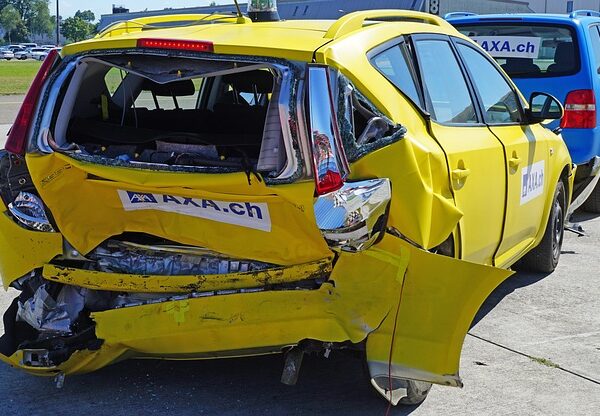Select Car Insurance: Unlocking Safe and Sustainable Mobility
Introduction
In an era where roads are increasingly congested and safety concerns are on the rise, selecting the right car insurance has become more crucial than ever for individual drivers and the automotive industry as a whole. This comprehensive guide delves into the world of select car insurance, exploring its various facets, global impact, and future prospects. By the end, readers will have a thorough understanding of how this dynamic sector is shaping our driving experience and ensuring our safety on the roads.
Understanding Select Car Insurance: A Comprehensive Overview
Definition: Select car insurance refers to a tailored and comprehensive coverage option designed to meet the specific needs of vehicle owners, offering protection against financial burdens arising from accidents, theft, or damage. It is not a one-size-fits-all policy but rather a customizable package.
Core Components:
- Liability Coverage: Protects against claims resulting from accidents where you are at fault, covering medical expenses and property damage for third parties.
- Collision Insurance: Covers repairs or replacement costs in the event of an accident, regardless of fault.
- Comprehensive Insurance: Provides protection against non-collision damages like theft, natural disasters, or vandalism.
- Personal Injury Protection (PIP): Ensures medical expenses and lost wages for the policyholder and their passengers, offering financial security during recovery.
- Uninsured/Underinsured Motorist Coverage: Protects against losses when dealing with drivers who have inadequate or no insurance.
Historical Context: The concept of select car insurance has evolved over decades to address changing road safety standards and consumer expectations. In the early 20th century, basic liability coverage was introduced to protect drivers legally. As accidents and claims increased, insurers started offering comprehensive packages, leading to the modern select car insurance model.
Significance: It empowers drivers to take control of their financial security by mitigating risks associated with vehicle ownership. This type of insurance is essential for ensuring peace of mind, especially when facing unexpected events on the road.
Global Impact and Trends
Select car insurance has left an indelible mark on global automotive markets, influencing consumer behavior and industry strategies alike:
| Region |
Impact and Trends |
| North America |
High adoption rates due to strict liability laws and a mature insurance market. Advanced driver-assistance systems (ADAS) are driving the demand for comprehensive coverage. |
| Europe |
Diverse regulations across countries impact policy offerings. The rise of electric vehicles presents new challenges, prompting insurers to provide specialized coverage. |
| Asia Pacific |
Rapidly growing car ownership leads to increased claims. Insurers are introducing digital policies and telematics-based pricing models. |
| Middle East & Africa |
Rising affluence drives demand for better protection. Islamic insurance (Takaful) is gaining popularity, offering sharia-compliant coverage options. |
Economic Considerations: Market Dynamics and Growth Drivers
The global car insurance market is a significant economic sector, with select car insurance playing a pivotal role:
- Market Size: According to a 2022 report by Grand View Research, the global auto insurance market size was valued at USD 1.45 trillion in 2021 and is expected to grow at a CAGR of 6.2% from 2022 to 2030.
- Investment Patterns: Insurers invest in risk assessment technologies and data analytics to improve efficiency and pricing accuracy, enhancing the select car insurance experience.
- Economic Impact: It contributes to economic stability by providing financial protection to drivers, encouraging safe driving practices, and supporting vehicle owners during unforeseen events.
Technological Advancements: Revolutionizing Select Car Insurance
Technology is transforming the landscape of select car insurance, offering both opportunities and challenges:
- Telematics and Telemetrics: These technologies enable insurers to track driver behavior in real-time, allowing for personalized pricing and improved safety incentives.
- Advanced Data Analytics: Insurers leverage big data to predict claims, assess risk more accurately, and offer tailored policies.
- AI-Powered Claims Processing: Artificial intelligence streamlines the claims process, reducing latency and increasing efficiency.
- Mobile Apps: Customers can now access policy details, file claims, and receive support through user-friendly mobile applications, enhancing convenience.
- IoT Devices: Internet of Things (IoT) devices like wearables and vehicle diagnostics tools provide real-time health data for better risk assessment.
Policy and Regulation: Shaping the Industry
The select car insurance industry operates within a framework of diverse policies and regulations, which vary significantly across regions:
- Minimum Liability Laws: Many countries mandate minimum liability coverage to protect third parties in the event of an accident.
- No-Fault Insurance: Some states have no-fault systems, where drivers are covered regardless of fault, reducing dispute over claims.
- Uninsured Motorist Protection: Required in many places, this protects policyholders from financial loss when dealing with uninsured or underinsured drivers.
- Data Privacy Regulations: With the rise of digital insurance, regulations like GDPR (EU) and CCPA (US) govern how insurers collect, store, and use customer data.
- Environmental Standards: Governments are encouraging eco-friendly vehicles, leading to incentives for insuring electric and hybrid cars.
Challenges and Criticisms: Overcoming Barriers
Despite its benefits, select car insurance faces several challenges that require attention:
- Complex Pricing Models: Customers often find it challenging to understand pricing structures, leading to concerns about transparency. Insurers can address this by providing clearer explanations and breaking down costs.
- Digital Divide: The shift towards digital policies may exclude individuals without access to technology or internet services, requiring insurers to offer alternative solutions.
- Data Privacy Concerns: With increasing data collection, privacy becomes a paramount issue. Insurers must ensure robust data protection measures and transparent practices.
- Misrepresentation of Claims: Fraudulent claims present a challenge, prompting the need for advanced verification methods and customer education.
Proposed Solutions:
- Develop user-friendly digital platforms that cater to diverse customer needs and skill levels.
- Collaborate with government bodies to ensure fair data collection practices and protect consumer privacy.
- Implement robust anti-fraud measures and educate customers about claim processes to reduce misinformation.
- Encourage industry collaboration for standardized pricing transparency.
Case Studies: Successful Applications and Lessons Learned
1. The Netherlands: A Model for Comprehensive Coverage
The Dutch approach to select car insurance is a notable success story. The government mandates comprehensive coverage for all vehicles, ensuring that drivers are protected regardless of fault. This system has led to:
- Reduced traffic fatalities and injuries.
- Efficient claims processing due to standardized policies.
- Increased awareness of road safety among drivers.
Lessons: Mandatory comprehensive coverage can significantly enhance road safety and simplify the claims process, benefiting both drivers and insurers.
2. Germany’s Telematics Revolution
Germany has embraced telematics, offering flexible insurance plans based on driver behavior. The program, known as “Telematikk”, rewards safe driving with lower premiums.
- Results: A study by the German Association of Insurers showed a 10% reduction in accidents among participants.
- Impact: This model encourages responsible driving habits and provides personalized coverage options.
Takeaways: Telematics can be a powerful tool for risk assessment, enabling insurers to offer tailored policies that benefit both customers and the industry.
3. The Rise of Electric Vehicle Insurance in Norway
Norway’s rapid adoption of electric vehicles (EVs) presented unique challenges for insurance providers. Insurers had to adapt by:
- Developing specialized EV coverage options addressing battery damage and charging infrastructure risks.
- Offering incentives for safe driving and eco-friendly practices among EV owners.
- Partnering with EV manufacturers to stay updated on technology advancements.
Success Indicators: The successful integration of EVs into the insurance market demonstrates the industry’s ability to adapt to emerging trends, ensuring continued relevance.
Future Prospects: Trends Shaping Select Car Insurance
The select car insurance sector is poised for significant growth and transformation in the coming years:
- Digital Transformation: Insurers will continue to digitize processes, offering seamless online policy purchases, claims, and customer interactions.
- Personalized Coverage: Advanced data analytics will enable insurers to provide highly customized policies, catering to individual driver needs.
- Telematics 2.0: Future telematics systems will incorporate AI for predictive maintenance and advanced risk assessment, enhancing safety and efficiency.
- Sustainability Focus: With growing environmental concerns, insurers will promote eco-friendly practices, offering incentives for green vehicles and safe driving habits.
- Autonomous Vehicles: The rise of self-driving cars will significantly impact insurance, requiring new coverage models and liability frameworks.
Conclusion: Navigating the Future of Mobility
Select car insurance is not just a financial safety net; it is an integral part of the evolving automotive ecosystem. As technology advances, consumer expectations grow, and global markets converge, the industry must adapt to ensure sustainable growth and customer satisfaction. By embracing innovation, enhancing transparency, and addressing challenges head-on, select car insurance will continue to unlock safer and more efficient mobility for individuals worldwide.
FAQ Section: Answering Common Concerns
Q: How do I choose the right level of coverage for my car insurance?
A: The ideal coverage depends on your vehicle’s value, driving history, and personal risk tolerance. Start by assessing your needs, considering liability limits, collision deductibles, and optional add-ons like rental car coverage.
Q: Can I get a discount if I bundle car insurance with other policies?
A: Absolutely! Many insurers offer discounts for bundling multiple policies, such as home and auto insurance. This approach can save you money by leveraging combined coverage.
Q: What should I do if my car is totaled in an accident?
A: Contact your insurer immediately to file a claim. Provide them with all necessary details, including the accident report. They will guide you through the process, helping you understand your coverage and options for replacing or repairing your vehicle.
Q: How can I ensure my car insurance policy is affordable?
A: Regularly review your policy and compare rates from different insurers. Consider increasing deductibles to lower premiums, but ensure it aligns with your financial comfort level. Safe driving habits and maintaining a clean record can also help keep costs down.
Before purchasing car insurance, assess your needs (vehicle type, driving history) to choose specialized policies like rental or company vehicle coverage. Compare top-rated insurers' quotes, cons…….
Before insuring your car, assess personal factors like driving history and vehicle type to determine coverage needs. Compare quotes from multiple providers, review policy options (liability, collision…….
Unlock savings on car insurance by thoroughly comparing policies and selecting one that balances cost and comprehensive coverage. Understand your needs, leverage discounts, regularly review, and switc…….
Understanding car insurance dynamics is key to selecting optimal coverage. Factors like driving history, vehicle type, and add-ons impact premiums. Choosing the right select car insurance plans throug…….
Selecting car insurance (Select Car Insurance) requires understanding vehicle and personal factors. Daily drivers need straightforward coverage, young drivers can benefit from tailored plans, and clas…….
Select Car Insurance streamlines the process of finding affordable, tailored coverage. Compare quotes online for multiple providers, evaluating rates, benefits, and discounts. Avoid unnecessary add-on…….
Select Car Insurance aims to build trust through customer satisfaction by offering flexible low deductible options, seamless digital quoting tools, and comprehensive coverage information. They maintai…….
Select Car Insurance offers personalized policies for diverse automotive needs, from temporary to classic cars. They provide flexible, user-friendly online platforms for easy quote comparison and clai…….
Before buying car insurance, identify unique coverage needs based on lifestyle, vehicle type, and driving habits. Compare multiple quotes using online platforms to find tailored policies with optimal…….
Before buying Select Car Insurance, understand your unique needs, use online tools for quick quotes and comparisons, prepare essential documents, review insurer reputations, tailor coverages, and cust…….









